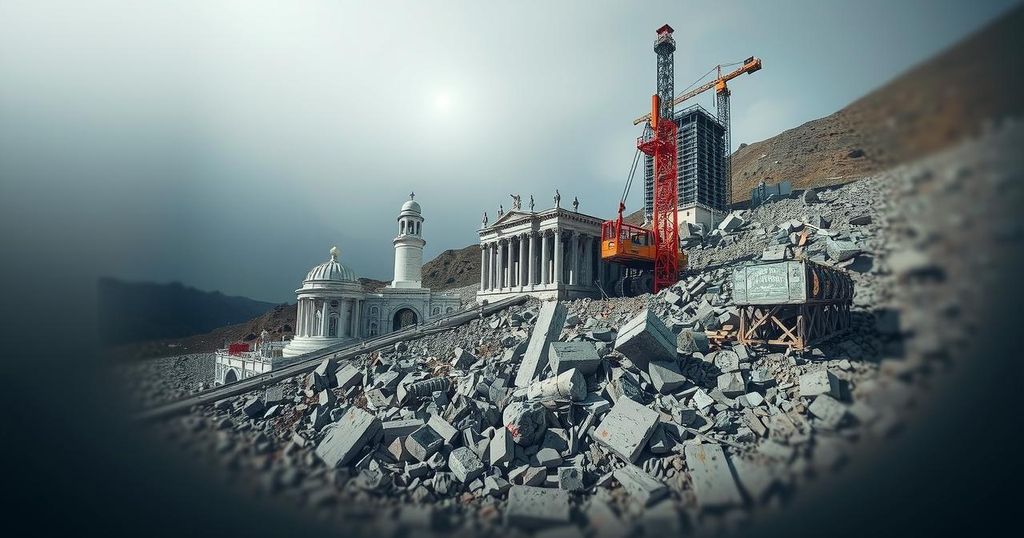The 2010 Chile earthquake caused widespread destruction, prompting a rapid governmental response that evolved from initial self-sufficiency to accepting international aid. Reconstruction efforts began swiftly, with significant progress reported by mid-2014. However, negligence related to tsunami warnings resulted in legal actions against several officials. The event emphasized the necessity for effective disaster preparedness, which proved beneficial in mitigating impacts of subsequent seismic events.
On February 27, 2010, a devastating earthquake struck near Concepción, Chile, prompting an immediate response from the Chilean army, which dispatched over 10,000 troops for recovery and security operations the following day. Initially, President Michelle Bachelet expressed confidence in Chile’s ability to recover without foreign assistance; however, as the situation unfolded, she sought help from the United Nations and accepted aid from various nations, including the United States and several members of the European Union and Asia. Bachelet faced criticism for her initial hesitance to deploy military forces, with some suggesting it was politically motivated in light of Chile’s past military dictatorship under Augusto Pinochet. As Sebastián Piñera was inaugurated on March 11 amidst aftershocks, the most chaotic phase of the response had lessened. By June, over 50,000 temporary homes had been established for those displaced, and housing subsidies were allocated to facilitate the transition to permanent living conditions. Nevertheless, by the following year, many families still resided in provisional accommodations, particularly in coastal regions heavily impacted by the tsunami, which also faced considerable challenges in restoring their fishing and tourism sectors. By July 2013, the government indicated that approximately 74 percent of the 222,000 subsidized home-rebuilding projects were completed, with the vast majority finished by mid-2014. The protocols established post-disaster were credited with minimizing loss of life during a significant magnitude-8.2 quake and tsunami that hit northern Chile in April 2014, with about half a million individuals participating in a preparatory evacuation drill in Valparaíso in May 2012, contributing to an efficient evacuation of nearly a million people after tsunami alerts in 2014 and subsequent events in 2015. In terms of legal ramifications, eight officials, including critical personnel from the National Emergency Office and the navy’s hydrographic service, faced charges of negligence for neglecting tsunami alerts and failing to warn coastal communities. Investigations revealed attempts to manipulate logs concerning the tsunami warnings, leading to legal settlements requiring the defendants to compensate victims’ families and the government being mandated to pay roughly 2.8 billion pesos to the victims of the tsunami.
The 2010 Chile earthquake was one of the most significant seismic events in the nation’s history, occurring in a region historically vulnerable to seismic activity. It triggered extensive geological and humanitarian challenges, demanding swift and effective recovery efforts. The chaotic aftermath saw the need for an organized response to address not only immediate safety concerns but also long-term rebuilding and legal accountability. The tragedy underscored the importance of preparation and infrastructure resilience in mitigating future disasters, thus shaping Chile’s approach to emergency management in subsequent years.
The 2010 Chile earthquake redirected the nation’s focus towards improving disaster preparedness and response systems. While significant progress in reconstruction was achieved, with major improvements in housing and infrastructure by 2014, the disaster also highlighted critical failings in emergency protocols that led to legal consequences for officials involved. Lessons learned from this catastrophe paved the way for better preparedness in future natural disasters, ultimately determining the trajectory of Chile’s disaster response frameworks.
Original Source: www.britannica.com






